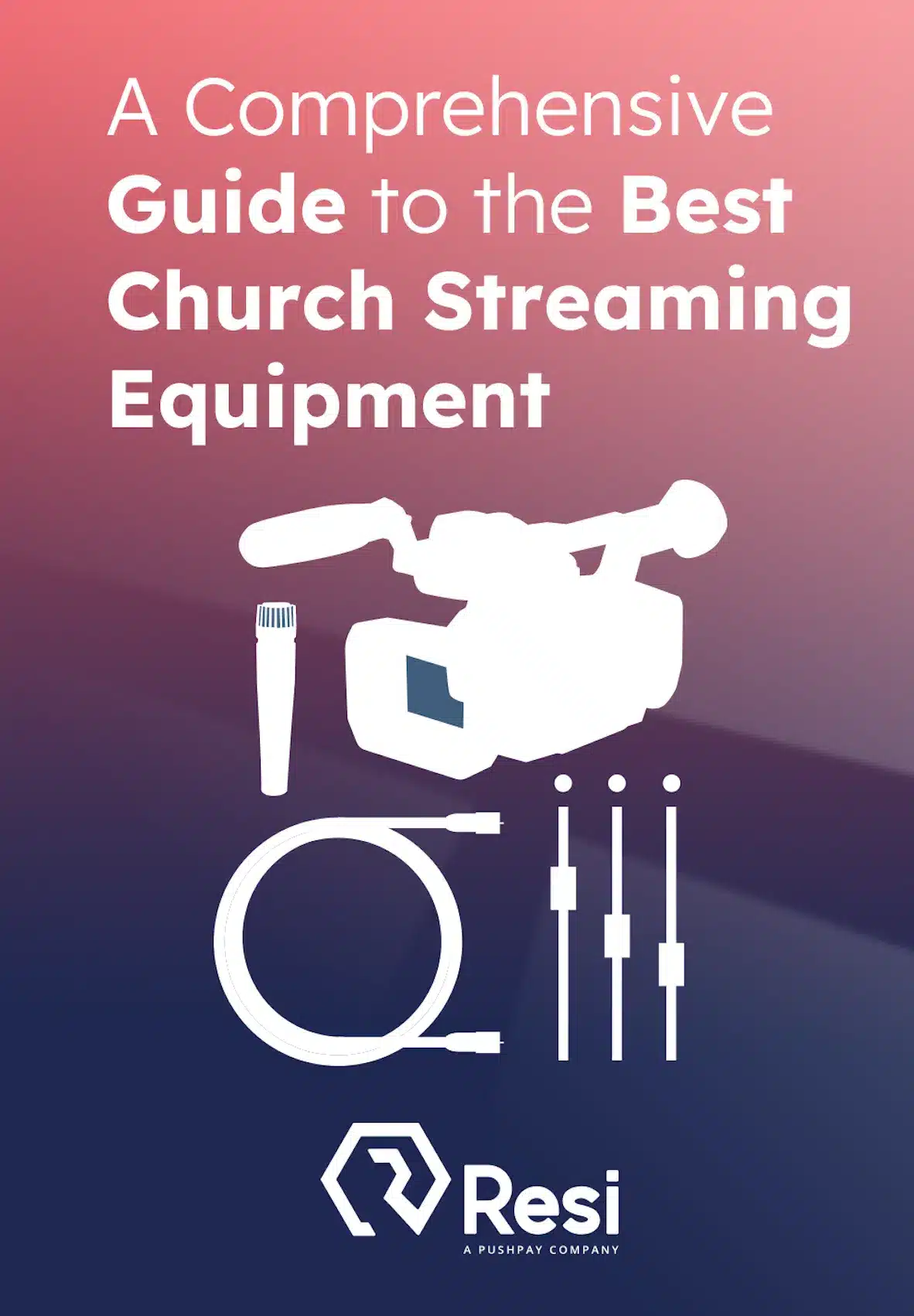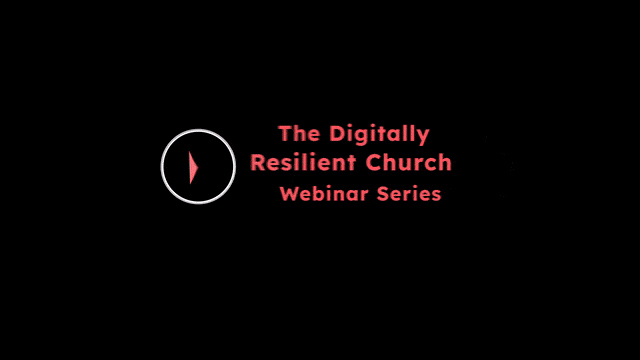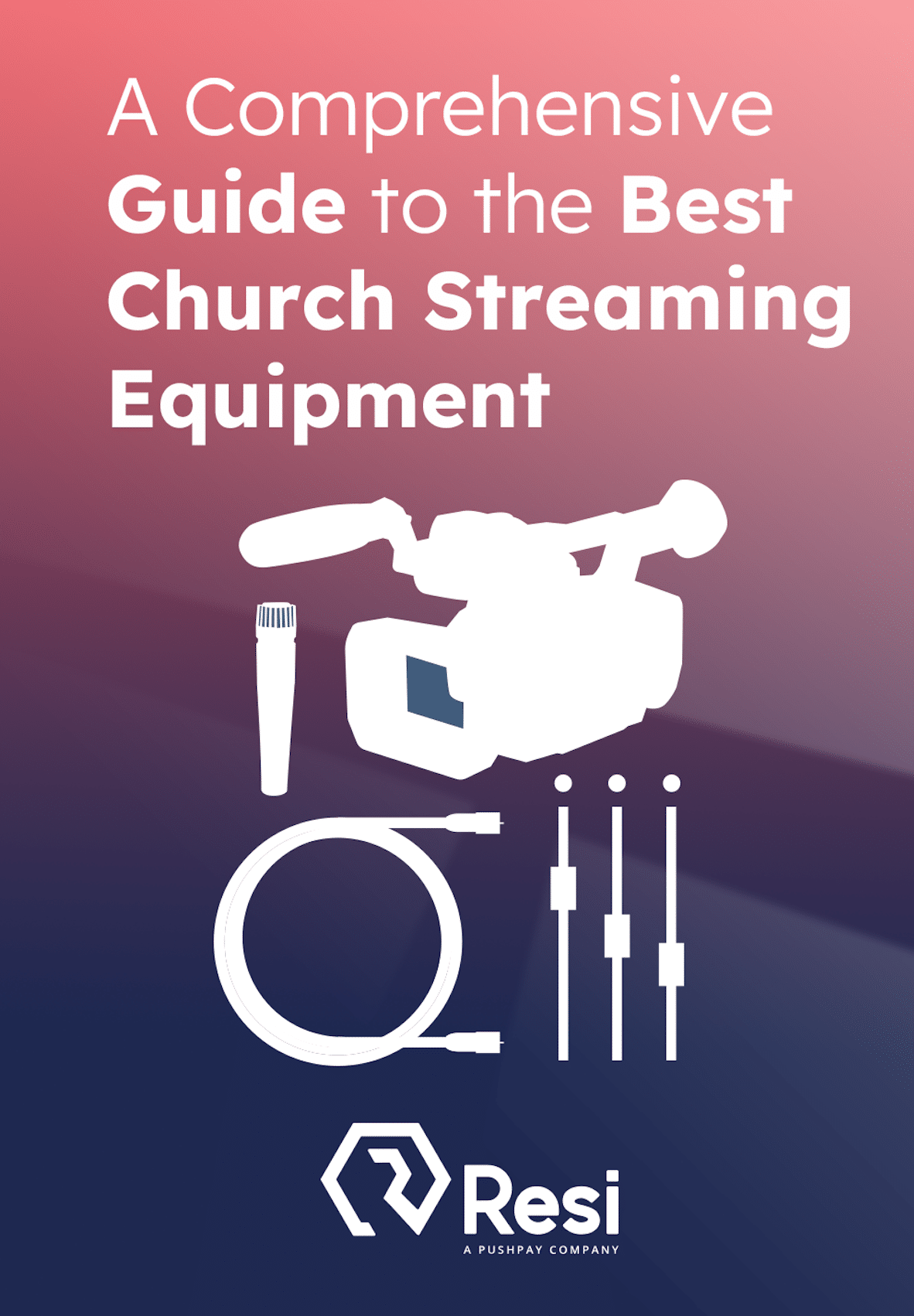
Live streaming has become a crucial way for churches to connect with their congregation, making services accessible no matter where people are. But a stream plagued by buffering, lag, or poor audio can be distracting and take away from the worship experience.
Several factors determine the quality of a live stream, including internet speed, equipment, and how the content is delivered. This guide breaks down key elements and provides practical tips to help churches improve their live streaming setup.
Best Livestreaming Equipment
Discover what top-rated equipment we recommend adding to your church streaming toolkit.
Download for free!
Key factors that impact live streaming quality
1. Internet speed and bandwidth
Most people focus on download speeds, but when it comes to live streaming, upload speed is what keeps the broadcast smooth. Without a strong upload connection, viewers may experience lag and interruptions.
Recommended upload speeds for different resolutions:
- 720p: 3-5 Mbps
- 1080p: 5-10 Mbps
- 4K: 15-30 Mbps
Managing bandwidth fluctuations
If multiple devices use the same network, congestion can impact stability, leading to buffering or dropped frames.
Ways to maintain a stable connection:
- Limit other devices’ internet usage during the live stream.
- Upgrade to a higher-speed internet plan if needed.
Improving connectivity
A wired connection is more reliable than Wi-Fi, so use an Ethernet cable whenever possible. Having a backup internet option, like a mobile hotspot, can also help prevent disruptions.
2. Streaming hardware and equipment
The type of camera you use has a big impact on the stream’s visual quality.
Comparison of camera types:
- Webcams – Budget-friendly but limited in quality.
- Camcorders – A solid mid-range option.
- DSLR/Mirrorless Cameras – Higher-quality video with better depth.
- Broadcast Cameras – Best for large-scale productions.
Suggested cameras for church streaming:
- Budget: Logitech C922 Pro HD
- Mid-range: Sony A6400
- Professional: Blackmagic Pocket Cinema 6K Pro
Prioritizing good audio
Bad audio can ruin a stream, even if the video looks great.
Types of microphones:
- Handheld Mics – Ideal for pastors who move around.
- Lapel Mics – Great for hands-free preaching.
- Shotgun Mics – Useful for capturing multiple speakers.
Best Livestreaming Equipment
Discover what top-rated equipment we recommend adding to your church streaming toolkit.
Download for free!
3. Lighting and video production
Proper lighting for clear image
Good lighting makes a significant difference. Here are a few affordable options:
- Softbox lights – Provide even professional lighting.
- LED panels – Adjustable brightness for different settings.
- Ring lights – Perfect for close-up shots.
Camera angles matter
Using different camera angles makes the stream more engaging:
- Wide-angle shots – Show the congregation.
- Close-ups – Focus on the speaker.
- Dynamic angles – Keep the video visually interesting.
Adding graphics for engagement
Overlaying sermon notes, lyrics, and lower-thirds (name titles) can make the stream more interactive.
4. Encoding settings and compression
Finding the right resolution bitrate
Balancing video quality and performance is key.
Best settings for live streaming:
- 720p at 3-5 Mbps – Standard quality.
- 1080p at 5-10 Mbps – Higher quality, requires better internet.
- 4K at 15-30 Mbps – Best for professional-level streaming.
Frame rate and latency
- 30 FPS – Works well for most streams.
- 60 FPS – Smoother motion but requires more bandwidth.
- Low-latency settings – Reduce delay for real-time interaction.
Compression for efficient streaming
Compression reduces bandwidth usage without sacrificing quality. Common formats include H.264 and H.265.
How Resi supports high-quality live streaming
Resilient Streaming Protocol (RSP)
Resi’s RSP prevents buffering and dropped connections, even if the internet is unstable.
Multi-platform and adaptive streaming
Resi allows churches to broadcast to multiple platforms while maintaining quality across all devices.
Cloud-based automation
Resi’s scheduling tools make live streaming easier, minimizing the technical workload for church media teams.
Advanced analytics
Resi provides real-time insights on viewer engagement and stream performance, helping churches improve their broadcasts.
Steps to improve live streaming today
Check your internet speeds – Use Speedtest.net before each stream.
Run test streams – Identify issues before going live.
Upgrade equipment as needed – Invest in better cameras, microphones, and encoders.
Train your media team – Regular training helps maintain high production quality.
Best Livestreaming Equipment
Discover what top-rated equipment we recommend adding to your church streaming toolkit.
Download for free!
Final thoughts
A high-quality live stream depends on a combination of strong internet, good equipment, and proper setup. By fine-tuning these areas, churches can create a more engaging and meaningful online worship experience.
For churches looking for a seamless streaming solution, Resi offers a stable, church-focused platform that makes high-quality streaming easy.







